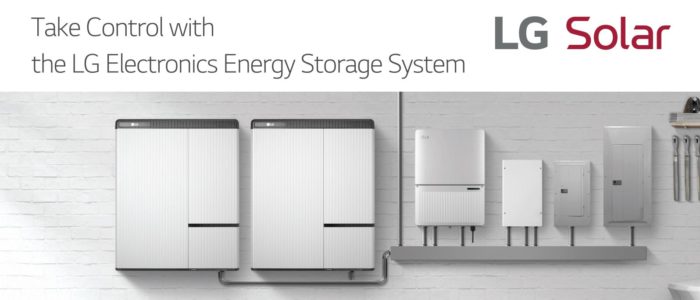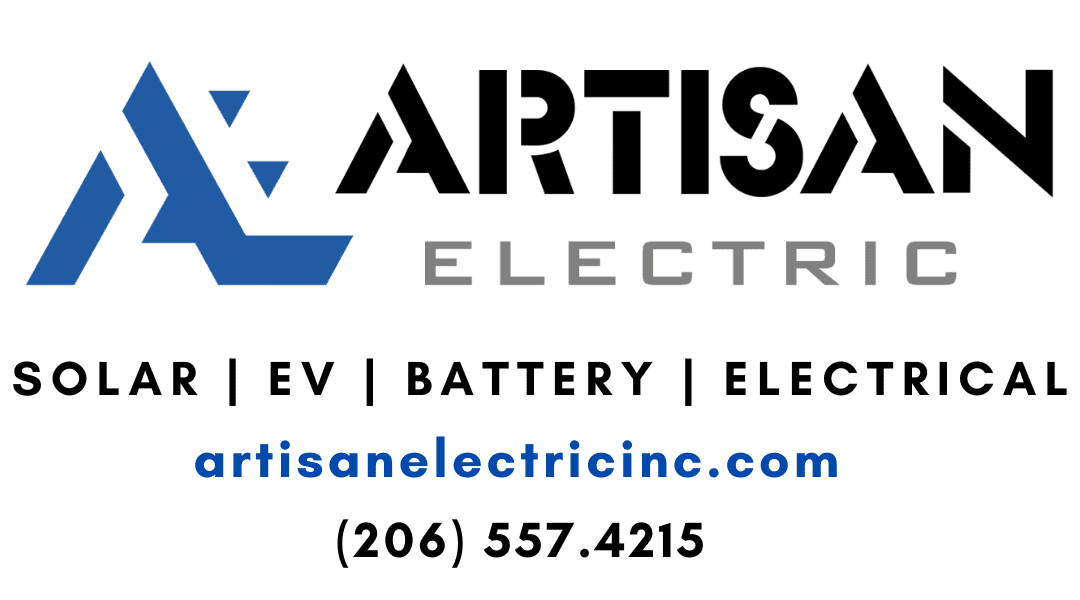Grid-tied vs. Off-grid with Batteries
Looking for solar power installation in Seattle? You’ve come to the right place. At Artisan Electric Inc., we provide professional solar installations to our customers. But we also want them to understand and choose the best option available for their needs. We are here as an educational resource for you to make informed decisions when researching and purchasing solar photovoltaic (PV) systems.
There are several misconceptions around how solar works and the components you need, and we’ll tackle a big one in this article. Sometimes people think getting a solar installation means going completely “off-grid”, meaning that they would be not tied to the electrical grid. Another related misconception is that solar PV systems must have batteries for the system to function at all.
We’ll clear up these common misconceptions about “grid-tied” and “off-grid” solar.
Different types of solar power systems
The first thing to understand is that there are different kinds of solar PV systems. For homes and small businesses, the fundamental choices are: grid-tied, grid-tied with battery backup (hybrid), and off-grid.
When people contact us for solar power installation in Seattle, and want to go off-grid, we usually find that their real goal is to “net zero” their home or business and dispense with their utility bill. Net zero homes produce all the power on-site that the home needs on an annual basis.
Another common motivation is to have backup in a power outage instead of a gas generator. Solar can do both. You can be independent and generate all the electrical power you need annually. Plus you can have backup power in a power outage, and finally stop paying money to the power company every month.
You can accomplish all these things without going off-grid. 99% of systems installed today are grid-tied solar, and the vast majority of this installations do not include any kind of battery storage.
What do the terms “Grid-tied” and “Off-grid” mean?
The difference between these two terms is in both how and where they store the energy generated.
Panels generate an electrical charge when the sun is shining during daylight hours, but you will need to store that energy in the day for turning the lights on in the evening. Solar PV systems do not consistently produce the exact same amount of power that you need the instant you need it. They are either producing more or less than you need. Therefore, all solar photovoltaic systems need a place to store the energy so that it can be used as needed.
“Grid-tied” systems use the grid to store power. Off-grid systems have no access to the grid, and rely on batteries to store power.
Is grid-tied solar more expensive than off-grid?
Actually, grid-tied systems require less components and therefore are a much less expensive solar installation. Disconnecting from the grid adds complexity to a PV system, and the price reflects this. You should always build a grid-tied system when you have access to the grid because you can store any excess power on a daily and seasonal basis via net-metering.
With Grid-tied systems, the excess generated energy is stored in the utility grid. Your panels will feed excess electricity into the grid, where it is distributed to your neighbors. You can think of it like a bank transaction, where you are making daily and seasonal deposits and withdrawals. Customers receive a credit for any excess energy they generate. You can use that credit any time the solar is not covering all of your power needs. Being tied into the grid allows you to keep the power on when the sun goes down, and use your excess solar power built up over days, weeks and months.
For solar power installation in Seattle and the Pacific-Northwest, our winters are dark and dreary. In this climate being grid-tied is critical for net-zeroing your annual usage. 80% or more of a solar PV system’s power output occurs between April and September. If you are not connected to the grid, your off-grid system is dumping most of this power because there is nowhere to store it. This means you would have to run a generator in the winter to charge batteries as a supplement to your low daily solar output. This makes off-grid systems not only expensive, but ineffective in the Pacific-Northwest.
Battery Storage
With a grid-tied system, when the grid power goes out, your solar turns off. Without another mode of storage, you cannot use your solar as a power source during an outage. This does not mean you need to go off-grid. It just means that you need to install a battery with your grid-tied system. This is called a “hybrid” system. Grid-tied battery backup systems act just like grid-tied systems when the power is on. However, during a power outage, they isolate your home from the grid and create a microgrid powered by solar and batteries.
With hybrid grid-tied battery backup systems, you always have access to your solar and batteries, but your primary storage is the grid. Off-grid systems, give you no access to the utility grid, so you will need to find another solution to store the energy that will be generated. That means you need a battery bank in your system to provide dedicated energy storage, and a generator to charge the batteries during the winter. When you have no access to power lines, both batteries and generators are essential for off-grid solar installations.
If you are looking to use solar power in a power outage or at night, batteries are required. Within the last few years, batteries designed specifically for hybrid systems have come to market, and are gaining in popularity.
LG Electronics Energy Storage System (ESS)

Conclusion
In summary, it doesn’t make sense to go off-grid if you have access to the electric grid and net metering. Grid-tied solar PV systems store excess energy your panels generate on the power grid. Grid-tied battery backup systems include battery storage for power outages and running loads on solar at night, while truly off-grid systems rely exclusively on batteries to run all loads all the time. Those batteries are being charged either by solar or a gas generator.
If you are still not sure which direction to go, grid-tied without batteries is the default, least-cost solution. Moreover, in the Pacific Northwest, we do not have TOU rates and our net metering laws are among the strongest in the nation, making batteries unnecessary for all but power outages.
Get a Quote for your Solar Power Installation in Seattle and area
Click here to get a custom quote for your solar power installation in Seattle. Or if you have questions or want more information, call us at (206) 557-4215. Our website also provides a wealth of information https://artisanelectricinc.com/
Artisan Electric Inc
969 S Nebraska Street Suite A
Seattle, WA 98108
(206) 557-4215
Follow Us On Social Media!
https://www.yelp.com/biz/artisan-electric-inc-seattle
https://facebook.com/ArtisanElectricSolar
https://instagram.com/artisanelectricinc
https://twitter.com/artisanelectinc

